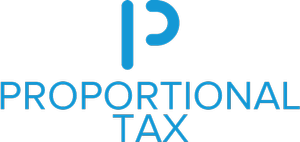The tax system in the United States, as in any federal tax state, is divided into a federal tax system and a system of tax states and municipalities. For this, it is necessary that there is a basic position at the level of the population strata. Regressive scale [1], which contributes to more or less uniform participation of the population in the formation of the revenue part of its budget.
The main part of American citizens (up to 90%) pays in taxes about 25% of their income. The remaining 10% share of tax deductions is higher, sometimes it reaches 50%. The main federal taxes in the United States: income (divided into personal and corporate), consumption and “withheld at source.”
Personal (personal) income tax was introduced in the United States in the middle of the XIX century. In the 1990s, income tax incomes accounted for approximately 8% of the country’s GDP. The principle of progressiveness in setting the tax rates leads to redistribution and relative social regulation.
Corporate income tax (income tax) arose at the beginning of the twentieth century and initially amounted to only 1%. The maximum level —52% —the tax reached in the late 1940s, after which it gradually decreased. Currently, it does not exceed 46% and varies depending on the formalities and types of corporate activities.
Consumption taxes (consumption taxes) are unpopular at the federal level because they inhibit economic activity. However, at the local level, consumer taxes are widely used, with corrective schemes for the production, distribution and consumption of goods. Consumer taxes are divided into luxury items. United States Excise Reduction Act (Excise Tax Reduction Act), 1965. Federal consumer taxes account for only 1.1% of GDP.
Taxes are “withheld from the sender” (payroll taxes), otherwise personal taxes on wages were introduced in 1935. At present, their share in tax revenues of the federal budget exceeds 30%; These taxes are developed by the US social security system.
In addition, at the federal level, taxes are levied on property and “on death,” that is, on donations and inheritance.
Taxes in the United States are recognized as the lowest in industrialized countries – their share is only 28% of GDP (an average of 38% in industrialized countries). This is due to a sufficient level of money emission. In US rubles 60% of world payments, i.e. inflation in national currency with the USA.
The process of lawmaking in the field of taxation in the United States is considered very closed and confusing. It is attended by the president, the secretary and members of the Council of Ministers for Financial Resources, members of the Council for Finance, who participate in numerous political, economic and social groups.
The bill, which in one way or another affects the tax system in the United States, begins its journey with the Committee on Ways and Means in the House of Representatives. After the 250 members of the commission discuss the draft law in an informal atmosphere of the seminar, indicative decisions are made, which are then set forth in legal language in the Legislative Committee of the House of Representatives. At the next stage, the parliamentary commission works in conjunction with the treasury (USTreasury) and the Joint Taxation Committee, which sends its detailed opinion on the bill to the House of Representatives. Having passed the law as a whole, the House of Representatives sends it to the Senate or, if the draft is rejected, returns it to the Commission on sources of funds for revision. The bill passed by the lower house is studying the Senate Finance Committee, and the secretary of the treasury is involved in this procedure. If the Senate does not make its amendments to the document, then it is accepted and sent to the President, otherwise the Senate returns the bill to Congress, which should adopt the amendments of the senators. If this does not happen (which happens most often), a conciliatory commission of the two chambers of parliament is created. The president should sign the project, finally agreed and accepted by both chambers, within 10 days. However, the head of the American state has the right of veto, which, however, he uses extremely rarely, since his representatives participate in all conciliation procedures.
In the United States, as in many other countries with relatively high levels of taxation, there is the problem of tax evasion. At the same time, the scale of this phenomenon, from the Russian point of view, is small. There is no special infrastructure in the United States that promotes tax evasion, such as Russian one-day firms that convert non-cash money into “black cash”. Tax evasion in the United States varies greatly in different categories of taxpayers and different types of income. There is a direct relationship of tax evasion with tax rates, with inflation, with cash reserves.
